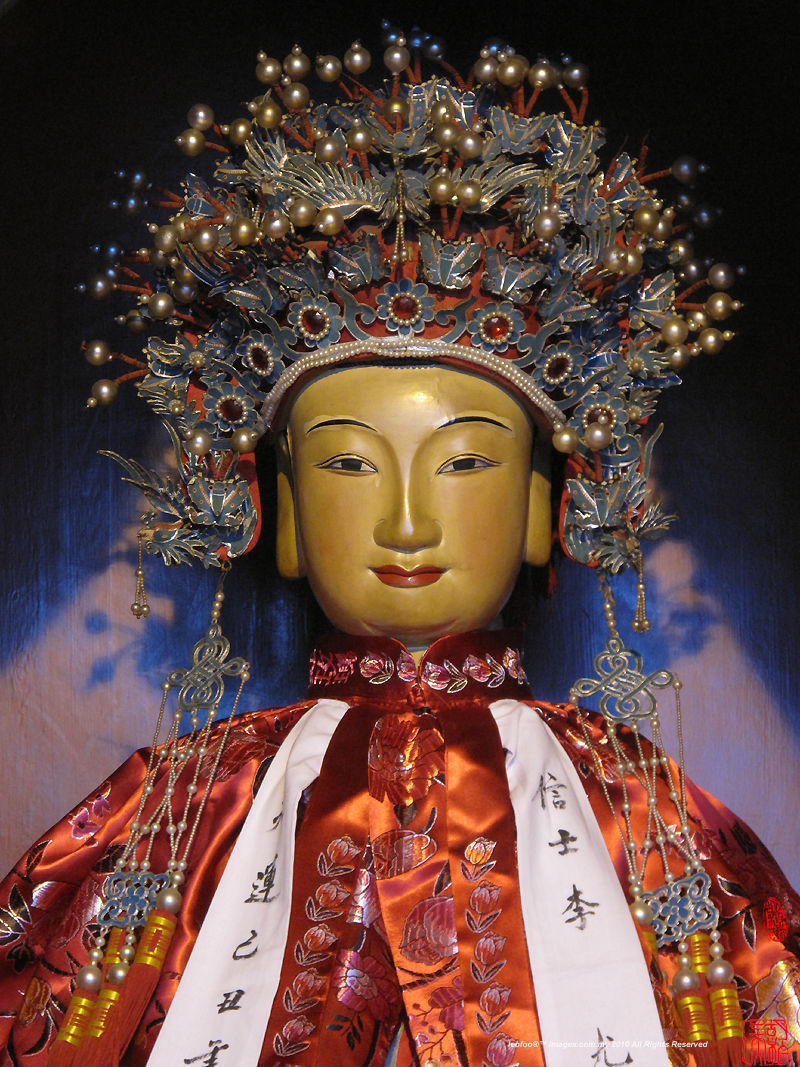("Miao", means temple in Mandarin, so you can simply termed it as
Cheng Huang Temple; similarly, "Yuan" means Garden, so YU Yuan means
Yu Garden)
Here at Cheng Huang Miao, it is a little different because it is NOT a Buddhist temple
as most people thought temple is often associated directly with Buddhism. Instead,
it is a typical Taoist temple. "Chenghuang" in Mandarin can interprets
as the "God who guarded the City", and many of the popular online tour
guides termed it as "God of the city Temple" in a direct translation. The
temple was built during the Ming Dynasty which is approx. 600 years old now, it had
gone through phases of expansion during Ming & Qing Dynasty and used to be occupied
a total area of approx. 33,000 sq. m. during its hey days. As China had gone through
a devastating period of Cultural Revolution during the '60 and it is only being rebuilt
in phases back in 1994 as the Communist government began to liberalize religious
beliefs, so, this location which can considered to be quite recent and the current
temple compound which comprises of multiple of inner temples within, measures 2,000
sq. m. But when you mention Cheng Huang Miao, you ought to include another few interesting
spot, one is the old areas which comprised series of hundred years old Chinese restaurants
as well as numerous retails shops outlets which sell varieties of local snacks and
bakeries. For that matter, here you can find, arguably the most famous Shanghai XIAO-LONG-BAO,
a hot favorite Shanghai -style of dim sum version. Another interesting spot is the
YUYUAN garden which is near by, annex to the temple.
Yuyuan Garden (or simply as YU Garden) can be regarded as the largest of Shanghai's
ancient gardens which has retained very strong Ming and Qing architectural styles.
The garden has six inner gardens, each with its own style, design and form which
exhibits their respective period built at its time of establishment. Today, both
Yu Garden and the City God Temple next to it, are integrated as one location. As
another factor is being, Yu Yuan City Garden management, had successful transformed
the entire location as YU YUAN TOURIST MART, a huge success commercially; further,
YuYuan has also cherished itself as a PLC now with diverse interest and investment
in other areas, but the Company actually had directly funded the rebuilt of the CHENG
HUANG MIAO project which began during the '90. Today, the temple can be regarded
as part of the Yuyuan, along with other attractions within the premises such as Chenxiang
Pavilion, Jiuqu Bridge, Huxin Pavilion etc. where the entire area had merged as a
successful commercial as well as tourism brand. Anyway, both the more famous Yu Garden
and the City God Temple seemingly has established themselves as two of the very important
tourist attraction of Shanghai city , it is often flooded with stream of local as
well as visitors from else where daily.
Anyway, both Yu Garden as well as the Temple charge entrance fees.
I would accept the Yu Garden policy as it was once a privately owned property, but
totally disagree the measure applies on the Cheng Huang Miao.
Just who is the figure up there in the photo ?
The wife of the City God. Why there is no photo on the statue ?
Portrayed as a red faced figure, errr ...not that handsome, quite fierce looking
actually; while his wife has a very famine, well faced looking women.
So I just show the statue of the wife. If you are still curious, pay a fee and find
out yourselves
| NEXT |
A glimpse of a typical garden scene of YU GARDEN inside ..
|

